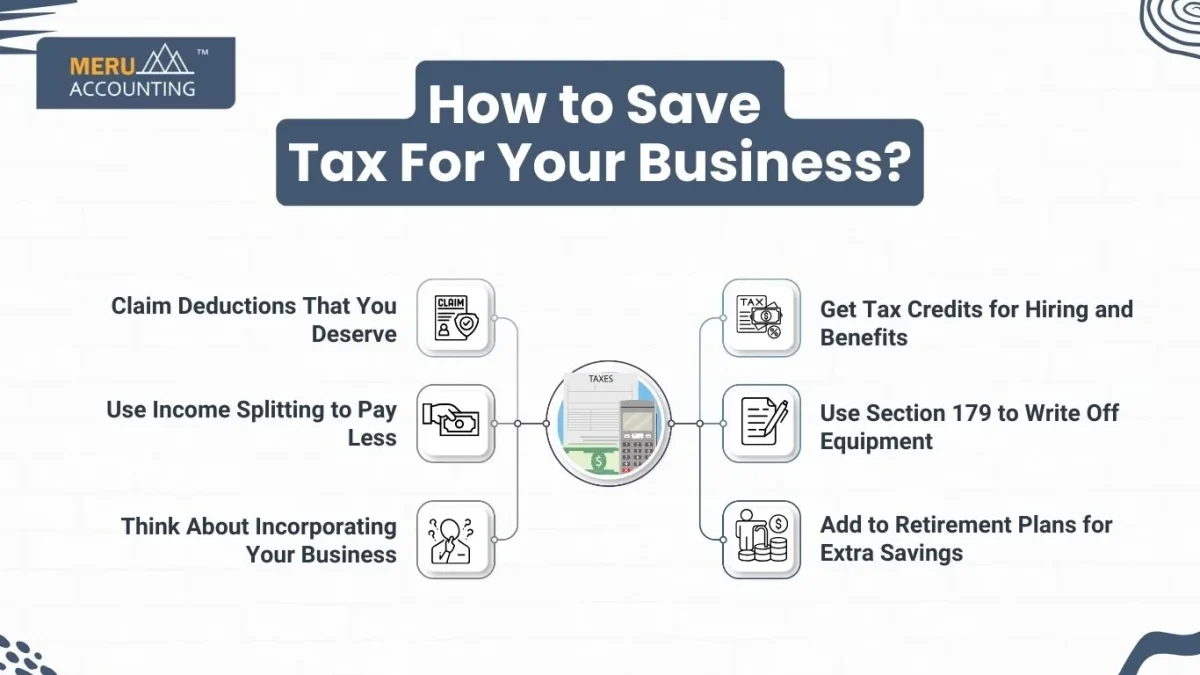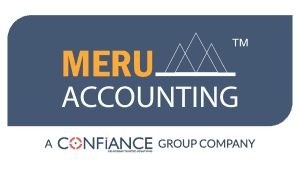Tax Strategies: Boost Savings with Smart Tax Planning
Everyone wants to save more each year. But not many know how much smart tax planning helps. With the right tax strategies, you can lower your taxes and grow your savings. If you wait until tax season, it may be too late to change things. Smart tax planning helps you take charge of your money. It gives you control and helps you meet goals faster. Simple steps taken early can give big results.
Tax rules change often. So, keeping a plan in place helps avoid stress. The right plan lets you use tax breaks, credits, and claims in the best way. With good advice and smart moves, you can keep more of what you earn and worry less later.
What Are Tax Strategies? A Simple Overview
Tax strategies are plans to lower what you owe the tax office. These plans are legal and help you use the rules to your advantage.
Save More with Better Planning
When you use the best tax strategy, you avoid paying more than you must. It helps you cut costs every year.
Works for Both Personal and Business Use
Tax optimization strategies work for people and businesses. They can guide how you spend, save, and invest.
Keep You Ready for the Year Ahead
Smart planning helps avoid tax shocks. You know what to expect and how to plan each move.
How to Save Tax For Your Business?
Running a business in the U.S. comes with many duties. One of them is paying taxes. You must give a share of your income to the government. While you can’t avoid taxes, you can lower them. This guide shares key tax optimization strategies for business owners who want to pay less and save more.
1. Claim Deductions That You Deserve
A smart tax-saving tip is to claim all valid deductions. Many small business owners miss them.
- If you use part of your home as your office, claim home office costs.
- If you drive for work, claim car-related costs like fuel, tolls, and parking.
- Keep records of all your work-related spending.
These help reduce your total taxable income.
2. Use Income Splitting to Pay Less
The U.S. and Canada both have a marginal tax system. When you earn more, your tax rate also rises. That’s where income splitting helps.
- If you make all the money in the household, you’ll pay a high tax rate.
- If you share income with your spouse or adult children, your tax load drops.
- It is legal if they help in your business
Always pay a fair wage and keep proper records.
3. Think About Incorporating Your Business
Incorporating your business can lower your taxes and give you legal protection.
- In Canada, small corporations get lower tax rates.
- In the U.S., you may gain from forming an S Corp or LLC.
- You’ll also gain better ways to plan your pay and profits.
Speak to a tax expert to see if this fits your plan.

4. Add to Retirement Plans for Extra Savings
Putting money into retirement plans saves tax now and helps in the future.
- Set up a 401(k) for your staff.
- If self-employed, use a SEP IRA.
- Your contributions lower your taxable income.
It’s a smart plan for you and your staff in the long run
5. Use Section 179 to Write Off Equipment
Buying tools or gear for your business? You may not need to wait years to claim them.
- Under Section 179, you can deduct the full price in the year you buy them.
- This rule applies to things like laptops, software, machines, or work trucks.
- It boosts your savings fast and helps you stay current with tools.
Be sure the item is in use by year-end to get the full benefit.
6. Get Tax Credits for Hiring and Benefits
The government rewards you for giving jobs and perks to staff.
- Use the Work Opportunity Tax Credit (WOTC) when you hire veterans or workers facing job gaps.
- The Employee Retention Credit (ERC) helps if COVID-19 hit your business.
- You can also deduct the cost of health insurance for your staff.
These credits cut what you owe and help you build a strong team.
Maximizing Tax Efficiency for Your Business
1. Choosing the Right Business Structure for Tax Efficiency
1.1 Sole Proprietorship
- Simple and low-cost to establish.
- Business income is reported on the owner’s tax return.
- No separation between business and personal assets—liable for all debts.
- Self-employment tax applies to all net earnings.
2. Partnership (General & Limited)
- Income is passed through to partners and taxed at individual rates.
- General partners are personally liable for business debts.
- Limited partners have limited liability but restricted management roles.
- Requires a formal partnership agreement to outline profit-sharing.
3. Limited Liability Company (LLC)
- Pass-through tax (profits taxed on the owner’s tax return).
- Can choose to be taxed as Sole Prop, Partnership, or Corp.
- Shields’ assets from business debts.
- No double tax unless taxed as a C-Corp.
4. S-Corporation (S-Corp)
- Pass-through tax: profits/losses flow to the owner’s tax returns.
- Skips double tax, unlike a C-Corp.
- Owners can lower self-employment tax by taking part pay and part shares.
- Limit of 100 U.S. owners (must be people or some trusts).
5. C-Corporation (C-Corp)
- Businesses are taxed at a flat 21% U.S. rate.
- Pays tax twice (corp tax + owner tax on shares).
- Can grow with no limit—may sell stock to raise funds.
- Best for firms that plan to scale or seek big backers.
6. Non-Profit Org (501(c)(3))
- No fed tax if it meets IRS rules.
- Must serve a cause (charity, faith, school, or social aim).
- Profits go back to the cause, not to owners.
2. Use Tax Credits
Tax credits cut your tax bill right away and may save more than write-offs. Key credits:
- R&D Credit: Cuts tax for firms that spend on new ideas.
- WOTC: Gives perks for hiring from target groups.
- Small Biz Health Credit: Helps small firms that give staff health cover.
- Energy Credit: For firms that use green tools or upgrades.
Smart use of tax credits can mean big tax cuts for your firm.
3. Plan Pay and Staff Perks
How you pay staff can shape tax. Key points:
- HSAs & FSAs – Tax-free funds for health costs.
- Stock or Shares – Let’s staff delay some tax.
- Perks – Tax-free perks like transit, school aid, or child care.
These perks help keep staff and cut taxes at the same time.
4. Pay Est Tax on Time
Firms must pay the estimated tax 4 times each year. This avoids fines and keeps cash flow smooth. Steps:
- Use last year’s return as a guide.
- Adjust pay based on this year’s income.
- Use software or a tax professional to check the math.
5. Use Tax-Advantaged Accounts and Investments
Investing in Qualified Opportunity Zones (QOZs) and utilizing Municipal Bonds can provide tax-free or deferred tax benefits. Additionally, businesses should evaluate investments that offer tax incentives.
6. Work with a Tax Professional
Tax laws are constantly evolving, making it essential to work with a CPA or tax professional who can:
- Identify applicable deductions and credits.
- Ensure IRS compliance.
- Optimize tax strategies based on industry-specific opportunities.
Avoiding Common Mistakes in Tax Planning
Even with solid planning, small mistakes can cost you. Avoid them to get the best out of your tax optimization strategies.
Missing Out on Claims
Many people forget to claim what they can. Always check what you spend on work, tools, or travel.
Not Keeping Records
Without good proof, you may lose a claim. Save bills and use a record system that works.
Late Lodgement
Missed due dates can mean fines. Mark your calendar and lodge your tax return on time.
Ignoring Tax Advice
Tax rules change. Get help from a pro to stay up to date and avoid risks.
Poor Income Split
If you split income without care, it may break tax rules. Always plan this with expert advice.
At Meru Accounting, we help clients find the best tax strategies to reduce their tax burden. We offer complete services for both personal and business tax needs. Our team checks each case with care and gives custom tax plans to cut costs. For small firms, we offer full tax service with claims, setup, and records to stay legal and save more.
FAQs
- What are tax optimization strategies and tax planning strategies?
These are smart, legal methods to lower tax bills. They help manage income, claim deductions, and use credits so you save more and stay compliant. - How can small business owners reduce their tax bills legally?
They can claim business expenses, shift income, use retirement savings plans, and apply for tax credits. Picking the right business structure also helps cut down on taxes. - Are these tax-saving methods the same as tax evasion?
No. Tax-saving methods follow the law. Tax evasion breaks it. A solid plan helps save money while avoiding penalties and audits. - Can tax-saving methods help with long-term financial planning?
Yes. These tools don’t just work for this year. They also help you build future savings with smart investments and income timing. - Why should I work with a tax expert?
Professionals know current tax laws. They design custom plans that fit your business. This leads to better savings and fewer costly errors. - How often should I review my tax strategy?
Review it once a year. If income or tax laws change, update the plan. Small changes can help save more and avoid issues.








